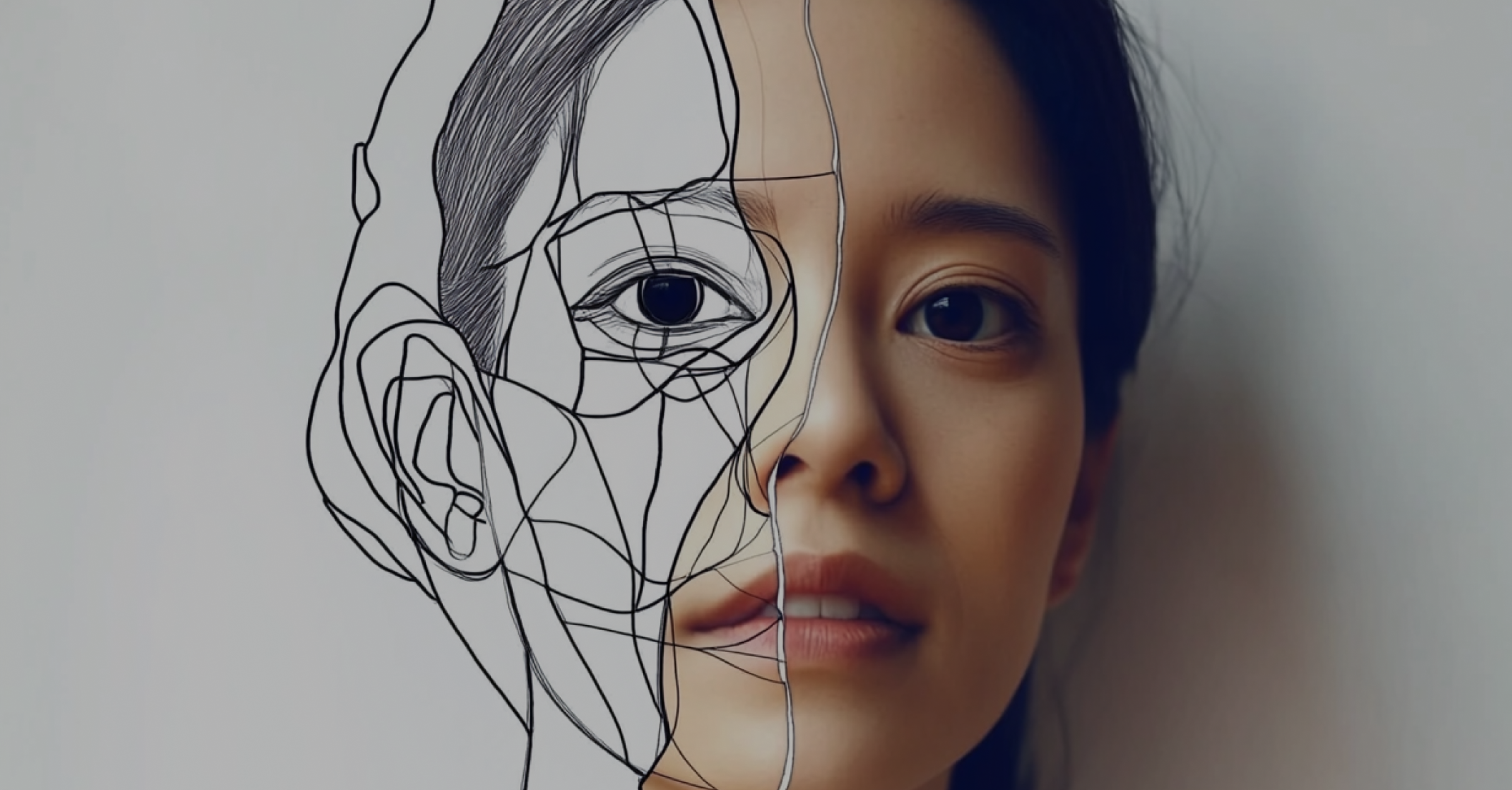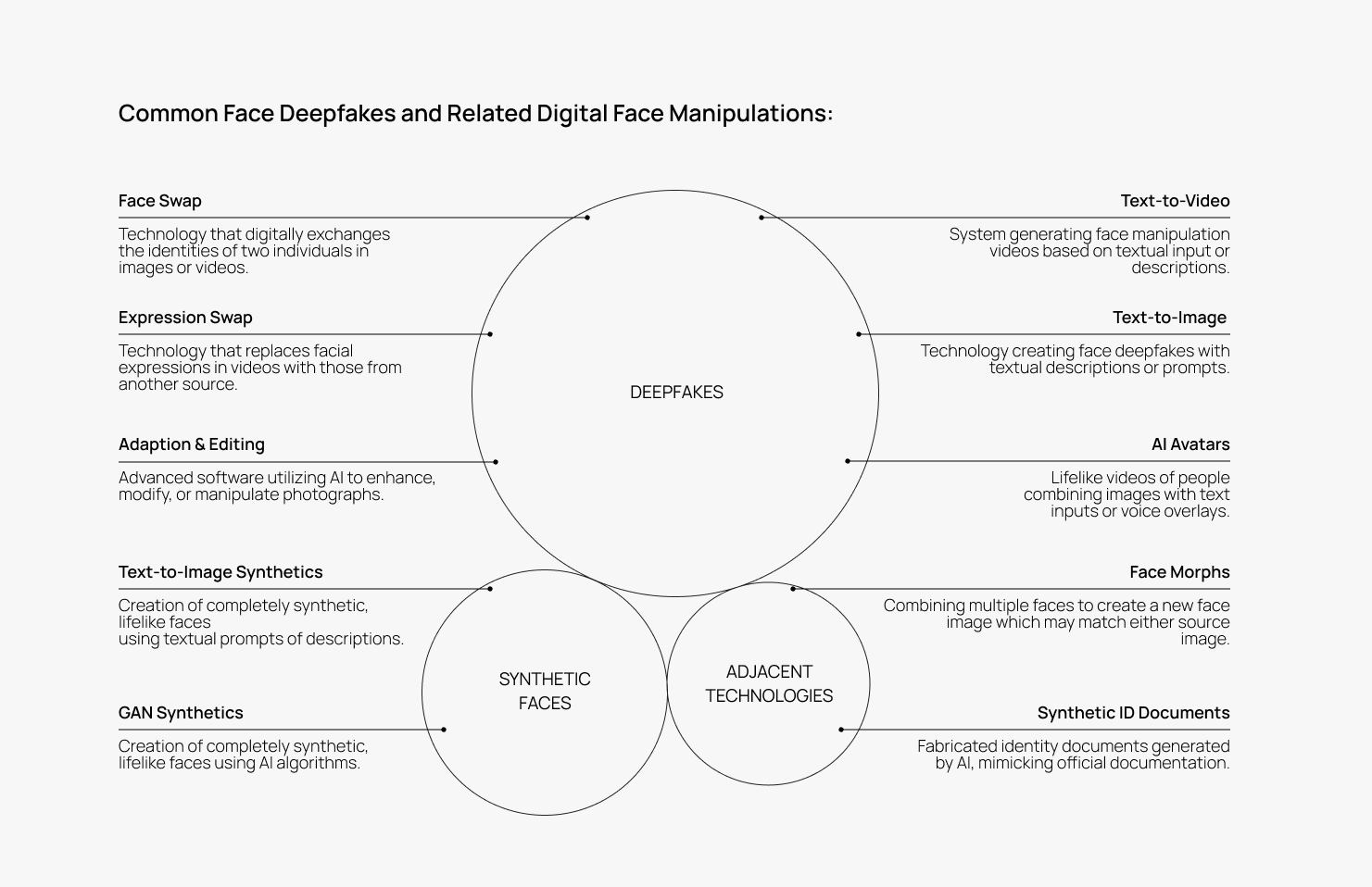From Spoofs to Deepfakes: Why Fraud Prevention Needs to Evolve

As digital threats become increasingly sophisticated, fraud prevention needs to evolve. Face recognition technology stands at the front line of the fight against fraud and unauthorized access, but traditional face recognition, powerful as it may be, cannot stand alone; face recognition compares the similarity of two faces, but does not inherently detect if a face is real. Meanwhile, the means to fake a face and subvert an identity system are rapidly evolving, in particular powered by generative AI, deepfakes, and synthetic imagery.
The evolution from simple spoof attacks to complex deepfakes and synthetic identities calls for a smarter and more adaptable approach to safeguarding identities and systems, and for systems that layer face matching with advanced mechanisms for separating real faces from fake in both physical and digital domains.
A New Era of Threats
A few years ago, simple face spoofing attacks, such as a printed photo, digital display, or a simple mask, were among the most common threats faced by remote and/or automated biometric identity systems.
Attackers worked to exploit these vulnerabilities to trick face authentication systems and gain unauthorized access. However, as awareness of these spoofing methods increased, so did the focus on developing a wide range of countermeasures, such as liveness detection, to differentiate between a real, live human face and a static image or a mask. While these defenses have been effective, malicious actors have not stood still. Enter deepfakes and synthetic identities—technologies that push the boundaries of fraudulent spoofs. Deepfakes are often hyper realistic, AI-generated videos or images that can mimic the appearance of real people with uncanny accuracy.
Synthetic identities, meanwhile, are identities constructed using some combination of fake personal data or AI-generated synthetic face images of fake identity documents, designed to bypass traditional security measures.
Why Face Authentication Needs to Adapt
For any business operating in sensitive sectors—like financial services, healthcare, or government—facial biometric authentication is a critical security tool. But relying on basic face recognition alone is not sufficient. Beyond long-standing attack vectors, the rise of these new threats means that anti-spoofing technology must continuously evolve, and organizations must consider adding multiple layers of capabilities to their biometric authentication and identification systems.
Defeating Next-Gen Spoofs
Modern spoofing attacks aren’t limited to photos or videos. Attackers have become more creative, using lifelike masks and high-resolution, color-calibrated digital displays to trick even the more advanced systems. These advanced techniques create a need for technologies that are capable of distinguishing between real, live human presentations and faked or manipulated inputs.
Combating Deepfake Threats
Deepfake technology is advancing rapidly, posing significant risks to identity verification, financial fraud prevention, and national security. Deepfakes are AI-generated manipulations that can convincingly mimic real people, and they come in various forms:
- Face Swaps: Replacing one person’s face with another in a video or image.
- Expression Swaps: Altering emotions or facial movements in real-time, making someone appear to express sentiments they never conveyed.
- Synthetic Faces: Entirely AI-generated images of people who do not exist, often created with generative adversarial networks (GANs).
- Audio-Visual Deepfakes: Manipulations that synchronize speech with fabricated lip movements, creating the illusion of authenticity in both voice and visuals.
- Dynamic Deepfakes: Real-time deepfakes, where a person’s live image is altered dynamically during a video feed.
The accessibility of deepfake creation tools amplifies these threats, making it easy for bad actors to produce convincing deepfakes with little expertise. This has wide-reaching implications, from bypassing biometric authentication to undermining trust in digital systems.
Comparing Synthetic Identities and Deepfakes
Synthetic identity fraud is one of the most complex challenges in digital security today, especially in industries like financial services. While it shares some overlap with deepfake technology—such as the use of AI-generated faces—synthetic identities are distinct in their construction and application.
Similarities: Synthetic identities often leverage generative AI to produce realistic-looking faces that can be used in fraudulent identity documents or online profiles. These faces are created to avoid duplication with real individuals, bypassing traditional verification systems.
Differences: Unlike deepfakes, synthetic identities are typically fabricated from scratch, combining false personal data such as names, dates of birth, and Social Security numbers with AI-generated images or documents. Generative AI can also produce entirely synthetic identity documents, including IDs or passports with realistic text and formatting.
The problem goes beyond facial features and into the realm of metadata and contextual details. For instance, synthetic identities may include plausible but entirely fake histories, such as fabricated addresses or credit histories, designed to exploit vulnerabilities in identity verification processes.
This complexity makes synthetic identity fraud a systemic issue that requires comprehensive solutions addressing both document and data validation as well as deepfake and synthetic face detection.
Liveness & Deepfake Detection: A Dynamic Duo
Together, liveness (i.e., physical presentation attack detection) and deepfake detection (i.e., digital presentation attack detection) are a potent combination in the fight against the use of fraudulent faces whether in the context of a registration / IDV or an authentication attempt, whether as a standalone face or as part of a broader synthetic identity attack. Where one technology may falter, the other picks up the slack, ensuring that fraudsters can’t bypass security measures, no matter how sophisticated their techniques.
Comparing Liveness Detection and Deepfake Detection
Liveness Detection defends against presentation attacks like photos, masks, and digital displays by confirming that a real, live person is present. It’s essential for preventing unauthorized access and strengthening digital identity verification.
Deepfake Detection identifies AI-generated or manipulated face imagery—such as face swaps, expression edits, and synthetic faces—helping prevent identity fraud, protect video communications, and ensure trust in digital environments.
For security and identity operators, an integrated approach that includes both liveness and deepfake detection simplifies implementation and enhances overall security. You no longer need to source solutions from multiple vendors, manage complex integrations, or worry about whether your defenses are fully covered. Paravision stands out as one of the few providers that deliver both liveness detection and deepfake detection from a single image and in an integrated package that’s easy to deploy, seamlessly integrates into existing systems, and delivers high performance and convenience.

Layered Integration for Added Security
Given the complex overlay with broader identity, authentication, media, and communications solutions, these technologies are most effective when layered on advanced cybersecurity policies and complementary tools, which address injection attack detection, document authentication, and metadata analysis for a holistic security framework. By combining Liveness and Deepfake Detection with other fraud preventing technologies, organizations can increase confidence in the security of their use of face recognition as a part of strong identity. Together, they provide a “defense-in-depth” strategy that is staged to keep pace with evolving threats.
A Future-Ready Approach
At Paravision, we believe that face authentication should be more than a point-in-time verification method; it should be a dynamic, evolving solution capable of handling today’s and tomorrow’s threats. With our advancements in liveness and deepfake detection, we’re setting a new standard in identity verification and fraud prevention. Combined with the right cybersecurity and identity tools and policies, our integrated approach helps ensure that digital interactions remain secure, from banking apps and airport terminals to remote identity verification processes.
As identity fraud evolves, so must our defenses. The threats will continue to become more complex, but with innovative solutions like Paravision Liveness and Deepfake Detection, we can help ensure that security remains one step ahead.
To learn more about how our products can protect your business from spoofs to deepfakes, reach out to us at paravision.ai/contact.